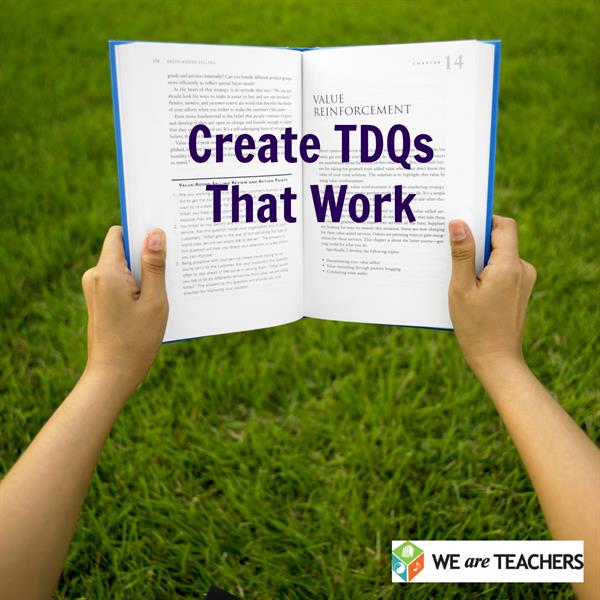So text dependent questions (TDQs) are a given in pretty much any lesson that involves text. That’s a good thing. (It’s also not a new thing—teachers have been sending students to the text for centuries.) Writing strong TDQs shapes students’ experience with text and ensures that they leave a lesson with new (and accurate) insights.
The first post of this three-post series, covered the ins-and-outs of TDQs. This post focuses on how to create TDQs that ensure students get the most out of a text.
Know What the Text Does Best
The most important thing is to know the text, and it’s strengths. Decide what you want students to gain from working with a passage: What do you want students to know? To understand? To realize? (Of course, where you decide to focus is not the only option and students may want to explore other aspects of the text.)
For example, the poem Paul Revere’s Ride by Henry Wadsworth Longfellow, is a strong example of creating action through verse. So, questions like the ones below all help students focus in on one thing this poem does well:
- When are we introduced to Paul Revere? What is he doing?
- How does Longfellow create suspense?
- How does Longfellow use sound? What is the affect on the reader?
- What happens in stanza 6? What do Revere’s actions tell you about his character?
Connect It to the Standards
From a lesson planning perspective, you want to make sure that students are mastering standards and TDQs are one way to do that. This isn’t to say that students’ discussion is limited to the standards you choose, but when TDQs are aimed at specific standards you’ll know that students covered the core standards.
Using “Paul Revere’s Ride,” a close reading lesson might address Common Core Standard RL.6.4 (determine the meaning of words and phrases and analyze the impact of word choice) with questions:
- Who does “my children” refer to in line 1? Why does Longfellow use that particular reference?
- What does the line “One if by land, and two if by sea” refer to?
- How does Longfellow incorporate sound? How does Longfellow create silence? How does this impact the reader?
- How and why does Longfellow use repetition in stanzas 10, 11, and 12?
- What does Longfellow mean with the phrase “the fate of a nation” in stanza 8?
Create a Sequence
Once you have the questions and the standards, the sequence of questions determines how students experience the text. In “Paul Revere’s Ride,” questions may create the experience of reading the poem only to “hear” the rhythm and the poetic devices:
- What is the rhyme scheme?
- How does the length of each stanza contribute to the pace of the poem?
- In stanza 3, how does Longfellow describe the ship?
- Why does Longfellow reference the churchyard in Stanza 6?
- How does Longfellow create the structure of Revere’s ride in Stanzas 10, 11, and 12?
Or, students may read the poem as a narrative:
- What is the purpose of the first stanza? What information does it tell the reader?
- In stanza 2, what does Paul Revere tell his friend?
- In stanza 4, what is Revere’s friend waiting for? Why?
- How does Longfellow personify the night-wind in Stanza 6? How does this impact the reader?
Either option is a valid experience, and students may have both experiences with the text as they reread it during close reading.

We want to know, how do you plan for TDQs? Leave your ideas and tips in the comments.
Samantha Cleaver is a former special education teacher. Her book, Every Reader, a Close Reader is scheduled for publication in summer, 2015. Read more at her blog: www.cleaveronreading.wordpress.com.
